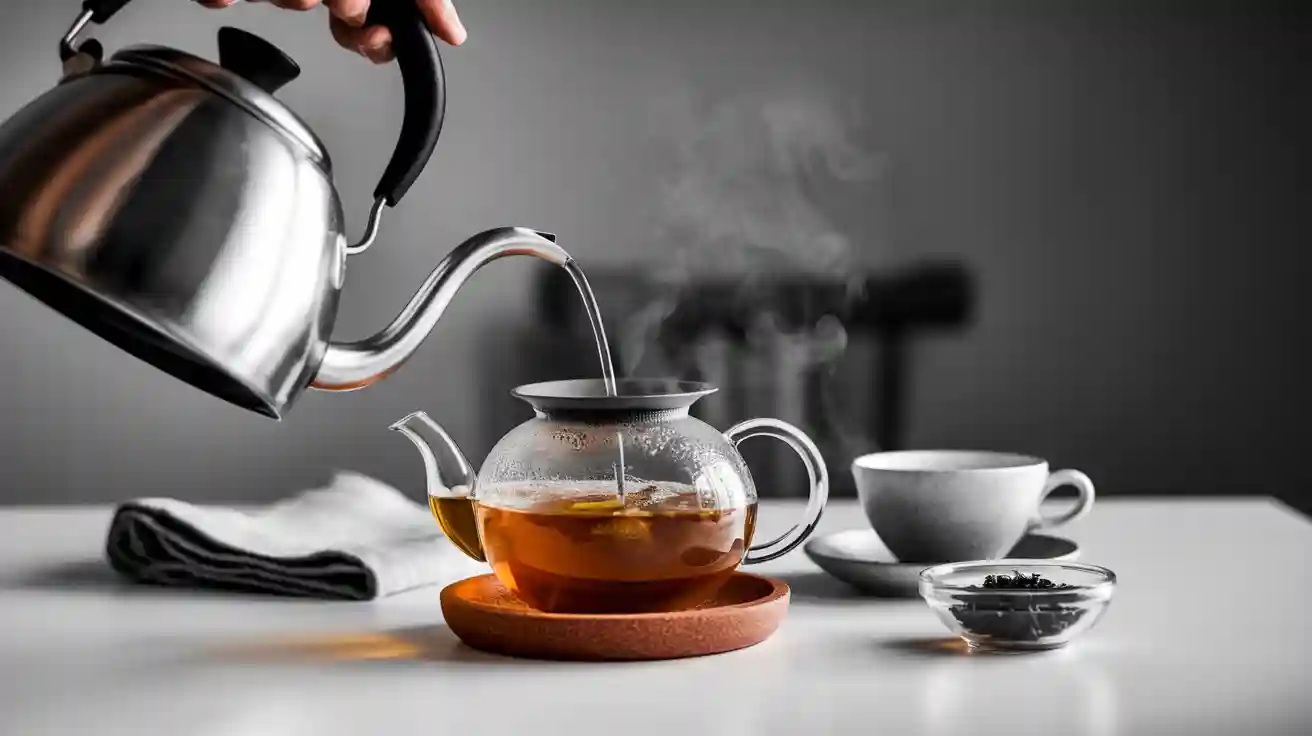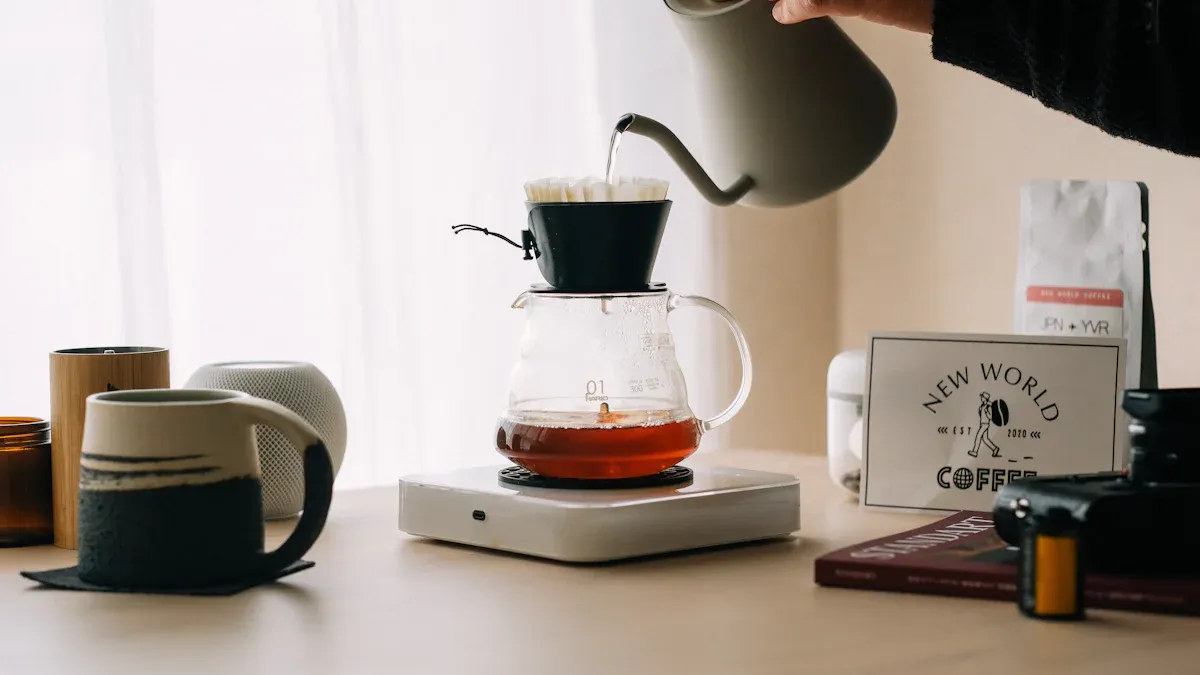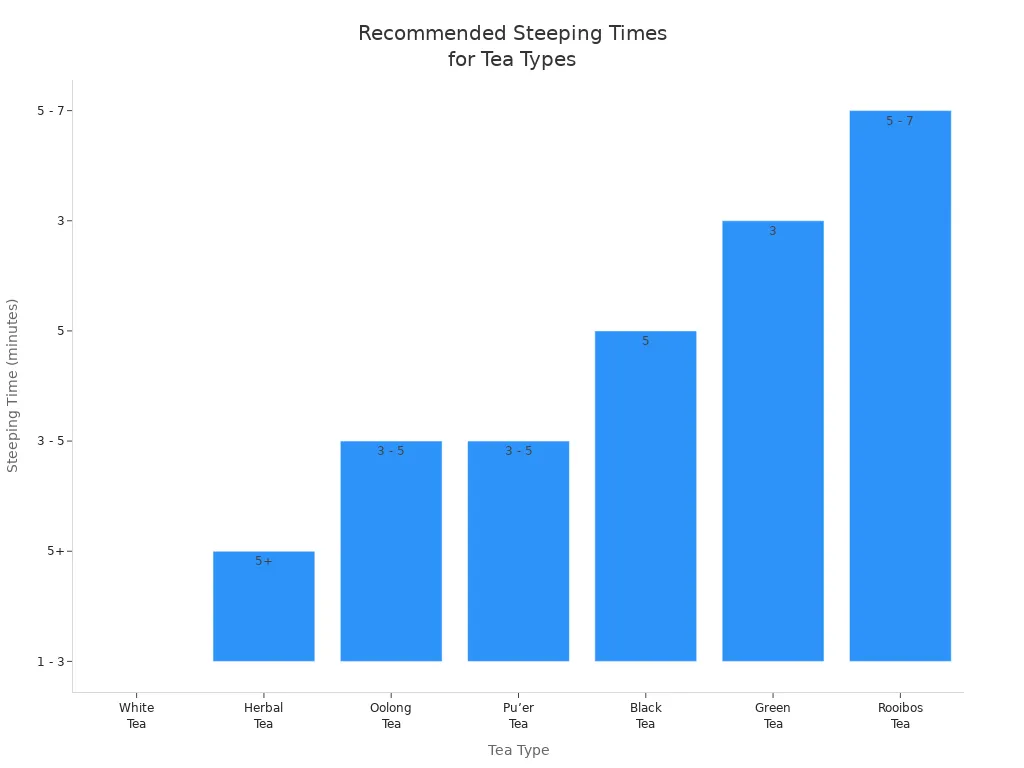
You grab your gooseneck tea kettle stovetop and feel the precision in your hands. The slender spout gives you steady, slow pouring for perfect brewing. With every pour, you see how precision pouring and temperature control shape tea extraction. The gooseneck kettle’s design ensures even infusion, unlocking ideal flavor in every pour-over tea brewing session.
Choosing and Preparing Your Gooseneck Tea Kettle Stovetop

Essential Features of a Gooseneck Kettle
When you look for the best tea kettles for pour over brewing, you want a gooseneck tea kettle stovetop that gives you total control. The gooseneck kettle stands out because of its long, narrow spout. This design lets you pour slowly and evenly, which is ideal for brewing delicate tea. Here’s what you should check for:
- Precise pour control from the gooseneck spout
- Durable materials like stainless steel for easy cleaning and long life
- A simple design without electronics for easy maintenance
- Manual temperature control so you can watch the water temperature closely
- Comfortable, balanced handle for steady pouring
- A capacity of about 1 liter, which is ideal for most brewing needs
The material of your kettle matters, too. Take a look at this table to see how different materials affect heat retention and brewing:
| Kettle Material | Heat Retention | Brewing Suitability & Effect on Tea Brewing |
|---|---|---|
| Cast Iron | Highest | Ideal for herbal teas needing long steeping |
| Stainless Steel | Moderate | Heats quickly, great for black tea and even brewing |
| Glass | Low | Lets you see the water, but loses heat fast |
| Gooseneck (Stainless Steel) | Moderate, but best for pour control | Protects delicate teas from scalding and bitterness |
Importance of Temperature Control in Brewing
You need to pay close attention to temperature control when brewing tea. Each type of tea has an ideal brewing temperature. If you use water that is too hot, you risk making your tea bitter. If the water temperature is too low, your tea may taste weak. Here’s a quick guide to the ideal brewing temperature for popular teas:
| Type of Tea | Ideal Brewing Temperature (°F) |
|---|---|
| Black Tea | 212 |
| Green Tea | 175–180 |
| White Tea | 175–180 |
| Oolong Tea | 195 |
| Herbal Tea | 212 |
| Yellow Tea | 167–176 |
| Pu-erh Tea | 212 |
| Purple Tea | 175–180 |
A gooseneck kettle gives you the variable temperature control you need. You can lift the kettle off the heat to cool the water slightly or keep it on the burner for higher temperatures. This hands-on approach helps you hit the ideal temperature for tea every time. Many people like the ritual of using a gooseneck tea kettle stovetop because it gives them more control than a gooseneck electric kettle.
Tip: Use a thermometer to check water temperature if your kettle does not have built-in variable temperature control.
Selecting Quality Tea and Water
The tea you choose makes a big difference in flavor. Delicate teas like white and green tea need gentle pouring and careful temperature control. The gooseneck kettle helps you pour slowly, protecting the leaves and bringing out the best taste. For black or herbal teas, you can use higher water temperature and a steady pour.
Water quality is just as important as tea quality. Bottled spring water often brings out more flavor and aroma than tap or filtered water. Tap water can make tea taste bitter or harsh. The ideal water for brewing has a balanced mineral content, which helps you enjoy the full range of flavors in your tea.
Note: Always use fresh, cold water for brewing. Avoid distilled or reverse osmosis water, as it can make your tea taste flat.
Perfect Brewing Techniques with a Gooseneck Kettle
Measuring and Preheating for Consistency
You want every cup of pour-over tea to taste just right. Consistency starts with measuring your tea leaves and water. Grab a digital scale or a kitchen scale. Weigh your tea leaves—aim for about 2.5 to 4 grams per 6 to 8 ounces of water. If you don’t have a scale, use 1 to 1.5 teaspoons of loose tea per cup. Remember, different teas have different densities, so weight gives you better precision than volume.
Know the volume of your teapot or cup. If you’re not sure, measure it with a cup or scale. You can even prepare pre-measured containers of tea leaves for quick brewing. This step helps you repeat your perfect brewing every time.
Preheating matters, too. Pour boiling water into your cup first, then into the teapot. This cools the water by about 10°C and helps you measure the water at the same time. Preheating your teaware keeps the temperature steady during brewing. Always adjust water temperature for the type of tea you’re using. Remove tea leaves as soon as steeping ends to avoid bitterness. Use a timer for consistent steeping times.
Tip: Consistent measuring and preheating give you better control over flavor and extraction. You’ll notice the difference in every sip.
- Use a digital or gram scale for tea leaves.
- Measure water volume with a cup or scale.
- Preheat teaware for steady temperature.
- Adjust water temperature for each tea.
- Remove leaves promptly after steeping.
- Use a timer for repeatable results.
Mastering the Pour: Flow Rate and Circular Motion
Precision pouring is the heart of pour-over brewing. Your gooseneck kettle gives you control over flow rate and direction. Aim for a steady flow rate of about 5 grams per second. This speed lets water penetrate the tea leaves evenly, boosting extraction and flavor. If you pour too fast, you risk uneven saturation. Too slow, and you might not agitate the leaves enough for full extraction.
The circular pouring motion makes a big difference. Start pouring in the center of the tea leaves, then move outward in a spiral. Bring the pour back to the center. This spiral motion ensures even saturation and prevents dry patches. Even extraction leads to balanced flavor and clarity in your tea.
During the bloom phase, pour a small amount of water slowly in a circular motion. This helps release gases and expand the leaves. After the bloom, continue pouring in a spiral for steady extraction. Pulse pouring—short, controlled bursts—can help maintain a consistent water level and extraction.
Note: Pouring control comes with practice. Try timing yourself pouring 100 grams of water in 10 seconds to get a feel for flow rate. Keep your elbows tucked in and hold the kettle comfortably for better precision.
- Spiral pour: Move from center outward and back.
- Bloom pour: Start with a slow, small pour.
- Pulse pour: Use short bursts for control.
- Keep the kettle spout 8 to 10 inches above the leaves.
- Adjust technique for comfort and steady pouring.
Adjusting Technique for Different Teas
Every tea needs its own brewing technique. Green and white teas like cooler water temperatures—between 160°F and 185°F. Black and herbal teas can handle hotter water, up to boiling. Your gooseneck kettle lets you control water temperature and pouring speed, which is key for delicate teas.
For green tea, use a slow, steady pour to avoid scorching the leaves. The narrow spout gives you precision pouring, so you can saturate the leaves gently. Black tea and herbal tea do well with a steady pour and higher temperature. Always watch your steeping time. Remove the leaves as soon as the timer goes off to prevent bitterness.
Here’s a quick guide to steeping times and temperatures for different teas:
| Tea Type | Water Temperature (°F) | Steeping Time (minutes) | Notes |
|---|---|---|---|
| White Tea | 160 – 180 | 1 – 3 | Delicate; try shorter times first |
| Green Tea | 160 – 180 | 2 – 3 | Avoid bitterness; use cooler water |
| Oolong Tea | 185 – 205 | 2 – 5 | Multiple steepings possible |
| Black Tea | 212 | 3 – 5 | Bold flavor; avoid oversteeping |
| Pu-erh Tea | 195 – 205 | 2 – 5 | Can handle more heat |
| Herbal Tea | 212 | 3 – 7 | Robust; longer steeping okay |
| Rooibos Tea | 200 – 212 | 5 – 7 | Caffeine-free; strong flavor |

You’ll notice that temperature control and pouring control are important for every tea. Practice your technique with different teas to find what works best for you. Try spiral, bloom, and pulse pouring to see how each affects extraction and flavor.
Callout: Beginners often struggle with temperature control when using a stovetop gooseneck kettle. Use a thermometer to check water temperature and avoid burning your tea. With practice, you’ll master precision pouring and perfect brewing.
Pour-over brewing with a gooseneck kettle takes patience and practice. The learning curve is steeper than other methods, but the payoff is worth it. You get more precision, better extraction, and richer flavor. Keep practicing your pouring techniques, adjust for each tea, and enjoy the journey to perfect brewing.
You master the stovetop gooseneck kettle with patience and practice. Focus on temperature and pouring for perfect extraction. Each brewing session lets you adjust kettle technique, pouring speed, and temperature control. Try new pouring patterns. You’ll notice how extraction changes. Experimenting with kettle methods improves brewing, extraction, and pouring. Enjoy your tea journey!
FAQ
How do you keep the water at the ideal brewing temperature with a stovetop kettle?
You can use a thermometer for temperature control. Lift the kettle off the heat when it reaches the ideal temperature for tea. This helps with perfect brewing.
What makes a gooseneck tea kettle stovetop better for pour-over tea than a regular kettle?
A gooseneck kettle gives you precision pouring. The slow and steady pour helps with even extraction and infusion. You get better control over water flow and temperature.
Can you use a gooseneck electric kettle for pour-over tea?
Yes, you can. A gooseneck electric kettle often has variable temperature control. This feature helps you hit the ideal brewing temperature for different teas and techniques.


